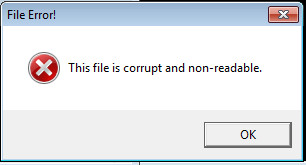BKDR_DELF.XXVQ
a variant of Win32/Delf.AEH (ESET-NOD32), Heur:Backdoor/Delf (Jiangmin)
Windows


Threat Type: Backdoor
Destructiveness: No
Encrypted: Yes
In the wild: Yes
OVERVIEW
Downloaded from the Internet, Dropped by other malware
This backdoor arrives on a system as a file dropped by other malware or as a file downloaded unknowingly by users when visiting malicious sites.
It does not have any propagation routine.
It executes commands from a remote malicious user, effectively compromising the affected system. However, as of this writing, the said sites are inaccessible.
It modifies the Internet Explorer Zone Settings.
It deletes the initially executed copy of itself.
TECHNICAL DETAILS
292,352 bytes
EXE
Yes
16 Sep 2016
Modifies files
Arrival Details
This backdoor arrives on a system as a file dropped by other malware or as a file downloaded unknowingly by users when visiting malicious sites.
Installation
This backdoor drops the following copies of itself into the affected system and executes them:
- %AppDataLocal%\reader_sl.exe
(Note: %AppDataLocal% is the Application Data folder found in Local Settings, where it is usually C:\Documents and Settings\{user name}\Local Settings\Application Data on Windows 2000, Windows Server 2003, and Windows XP (32- and 64-bit); C:\Users\{user name}\AppData\Local on Windows Vista (32- and 64-bit), Windows 7 (32- and 64-bit), Windows 8 (32- and 64-bit), Windows 8.1 (32- and 64-bit), Windows Server 2008, and Windows Server 2012.)
It displays the following fake error messages:

Autostart Technique
This backdoor adds the following registry entries to enable its automatic execution at every system startup:
HKEY_CURRENT_USER\Software\Microsoft\
Windows\CurrentVersion\Run
PDF Reader = "%AppDataLocal%\reader_sl.exe"
Other System Modifications
This backdoor modifies the following registry entries:
HKEY_CURRENT_USER\Software\Microsoft\
Windows\CurrentVersion\Internet Settings\
ZoneMap
UNCAsIntranet = "0"
(Note: The default value data of the said registry entry is "{user defined}".)
HKEY_CURRENT_USER\Software\Microsoft\
Windows\CurrentVersion\Internet Settings\
ZoneMap
AutoDetect = "1"
(Note: The default value data of the said registry entry is "{user defined}".)
Propagation
This backdoor does not have any propagation routine.
Backdoor Routine
This backdoor executes the following commands from a remote malicious user:
- Check Server/Client Connectivity
- Install/Uninstall/Update Server
- Execute/Terminate Server
- Execute/Terminate/List Processes
- List and Control Available Windows (Maximize, Minimize, Close, Hide, Disable Buttons)
- Activate/Deactivate Keylogger
- Visit Arbitrary websites
- Control Mouse (Disable, Enable, Shake, Freeze, Move)
- Enable/Disable the Start Button
- Display Arbitrary Message Boxes
- Manage Files and/or Folders(List, Create, Delete, Rename, Move, Hide, Unhide, Copy, Cut, Paste, Search)
- Traverse Directories (Recent, Documents, Desktop, Windows, System, Current)
- Change User
- Perform chat
- Perform Screen Capture
- List and control Webcams
- Upload/Download Arbitrary Files (Pause, Resume)
- Get Thumbnails
- Get Audio
- Get/Set Clipboard data
- List available drivers
- Perform DDOS (TCP, UDP)
- Gather the following information and send to the C&C server:
- System Information
- Computer Name
- Host Name
- Google Talk Credentials
- Keylogs
- Server Information
It connects to the following URL(s) to send and receive commands from a remote malicious user:
- mmzo.{BLOCKED}s.org:1431
However, as of this writing, the said sites are inaccessible.
Web Browser Home Page and Search Page Modification
This backdoor modifies the Internet Explorer Zone Settings.
Other Details
This backdoor sets the attributes of the following file(s) to Hidden and System:
- %AppDataLocal%\reader_sl.exe <- copy of itself
(Note: %AppDataLocal% is the Application Data folder found in Local Settings, where it is usually C:\Documents and Settings\{user name}\Local Settings\Application Data on Windows 2000, Windows Server 2003, and Windows XP (32- and 64-bit); C:\Users\{user name}\AppData\Local on Windows Vista (32- and 64-bit), Windows 7 (32- and 64-bit), Windows 8 (32- and 64-bit), Windows 8.1 (32- and 64-bit), Windows Server 2008, and Windows Server 2012.)
It deletes the initially executed copy of itself
NOTES:
It does not have rootkit capabilities.
It does not exploit any vulnerability.
SOLUTION
9.800
12.782.02
17 Sep 2016
12.783.00
18 Sep 2016
Step 1
Before doing any scans, Windows XP, Windows Vista, and Windows 7 users must disable System Restore to allow full scanning of their computers.
Step 2
Note that not all files, folders, and registry keys and entries are installed on your computer during this malware's/spyware's/grayware's execution. This may be due to incomplete installation or other operating system conditions. If you do not find the same files/folders/registry information, please proceed to the next step.
Step 3
Restart in Safe Mode
Step 4
Delete this registry value
Important: Editing the Windows Registry incorrectly can lead to irreversible system malfunction. Please do this step only if you know how or you can ask assistance from your system administrator. Else, check this Microsoft article first before modifying your computer's registry.
- In HKEY_CURRENT_USER\Software\Microsoft\Windows\CurrentVersion\Run
- PDF Reader = "%AppDataLocal%\reader_sl.exe"
- PDF Reader = "%AppDataLocal%\reader_sl.exe"
Step 5
Restore this modified registry value
Important: Editing the Windows Registry incorrectly can lead to irreversible system malfunction. Please do this step only if you know how or you can ask assistance from your system administrator. Else, check this Microsoft article first before modifying your computer's registry.
- In HKEY_CURRENT_USER\Software\Microsoft\Windows\CurrentVersion\Internet Settings\ZoneMap
- From: UNCAsIntranet = "0"
To: UNCAsIntranet = "{User Defined}"
- From: UNCAsIntranet = "0"
- In HKEY_CURRENT_USER\Software\Microsoft\Windows\CurrentVersion\Internet Settings\ZoneMap
- From: AutoDetect = "0"
To: AutoDetect = "{User Defined}"
- From: AutoDetect = "0"
Step 6
Restart in normal mode and scan your computer with your Trend Micro product for files detected as BKDR_DELF.XXVQ. If the detected files have already been cleaned, deleted, or quarantined by your Trend Micro product, no further step is required. You may opt to simply delete the quarantined files. Please check this Knowledge Base page for more information.
Step 7
Reset Internet security settings
Step 8
Scan your computer with your Trend Micro product to delete files detected as BKDR_DELF.XXVQ. If the detected files have already been cleaned, deleted, or quarantined by your Trend Micro product, no further step is required. You may opt to simply delete the quarantined files. Please check this Knowledge Base page for more information.
Did this description help? Tell us how we did.


